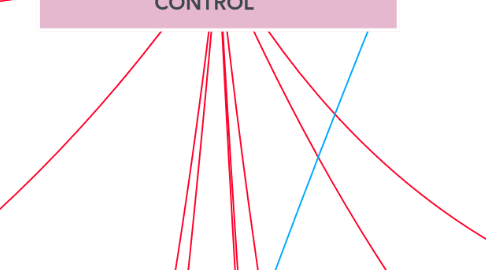
1. HIGH PRIORITY FOR TODAY'S WORKFORCE
1.1. Family orientation
1.2. Sense of community
1.3. Quality of life issues
1.4. Volunteerism
1.5. Autonomy
1.6. Flexibility & Nonconformity
2. MOTIVATION IN WORKPLACE
2.1. Classical Theory (Frederick Taylor)
2.1.1. More Money = Greater Motivation
2.1.2. Efficient Company = High Profits & Pay
2.1.3. Time-&-Motion Study
2.2. Behavior Theory (Hawthorne Studies 1925)
2.2.1. Special attention from management= Increase Productivity
2.2.2. Physical Environment changes effect workers output
2.2.3. Doing experiments on employees in changes between Physical Environment and Worker Output
2.3. Contemporary Motivational Theory (Douglas McGregor)
2.3.1. Theory X
2.3.2. Theory Y
3. MASLOW HIERARCHY OF NEEDS MODEL
4. WHAT WORKERS WANT MOST FROM WORK
4.1. 1.
4.2. 2.
4.3. 3.
4.4. 4.
4.5. 5.
4.6. 7.
4.7. 8.
4.8. 9.
5. 21 st CENTURY LEADERSHIP MANAGEMENT
5.1. MOTIVATION
5.1.1. Varying lifestyles reflect varying goals of employee
5.1.2. Different Desire At work
5.2. LEADERSHIP
5.2.1. Flatter organizations = Less Autocratic
5.2.2. Diversity of workplace + Diversity Of Leaders
6. CONTROLLING
6.1. CONTROLLING CONSISTS OF VERIFYING WHETHER EVERYTHING OCCURS IN CONFORMATIONS WITH THE PLANS ADOPTED, INSTRUCTIONS ISSUED AND PRINCIPLES
6.2. TWO MEASURING STANDARDS
6.2.1. ESTABLISHING STANDARDS
6.2.1.1. MEASURABLE OR TANGIBLE = Can be measured and expressed are called as measurable standards. cost,output,expenditure,time and profit
6.2.1.2. non-measurable tangible-= csnnot be measured monetarily.
6.2.2. MEASURING PERFORMANCE
6.2.2.1. Attitude of workers
6.2.2.2. Their morale to do work
6.2.2.3. The developments in attitudes regarding the physical environment
7. THE IMPORTANCE OF CONTROLLING
7.1. CONTROL SYSTEM PROVIDES MANAGERS WITH INFORMATION AND FEEDBACK ON EMPLOYEE PERFORMANCE.
7.2. CONTROLS HELPS IN PLANNING WHETHER THEIR GOALS AND PLANS ARE ON TARGET AND WHAT FUTURE ACTIONS TO TAKE
7.3. PROTECTING THE WORKPLACE & ENHANCE PHYSICAL SECURITY AND HELP MINIMIZE
8. CONTROLLING
8.1. TYPES OF CONTROL
8.1.1. WORK INPUTS
8.1.1.1. Ensure the right directions are set and the right resource inputs are available
8.1.2. WORK THROUGHPUTS
8.1.2.1. Ensure the rights things are being done as part of work flow operations
8.1.3. WORK OUTPUTS
8.1.3.1. Ensure that final result are up to desired standards
9. PATTERNS OF MANAGEMENT BEHAVIOR IN DELAING WITH EMPLOYEES
9.1. Autocratic Styles
9.1.1. issue Orders
9.1.2. Expect them to be followed
9.2. Democratic styles
9.3. Free-rein Styles
9.3.1. laissez faire or free-rein styles
9.3.2. manager is advisor to subordinates
9.3.3. ask for input from subordinates
10. PSYCHOLOGICAL CONTRACT
10.1. EMPLOYEE CONTRIBUTIONS
10.1.1. WHAT?
10.2. ORGANIZATIONS INDUCEMENTS
10.2.1. WHAT ORGANIZATION GIVING?
10.3. HUMAN RELATIONS - INTERACTION OF EMPLOYEE
10.3.1. SATISFIED OR NOT
11. SATISFACTION &MORALE IN WORKPLACE
11.1. JOB SATISFACTION
11.1.1. Degree of enjoyment that employee derive
11.2. MORALE
11.2.1. Employee overall attitude
11.3. TURNOVER
11.3.1. Replacement of workforce
12. TWO FACTOR THEORY
12.1. MOTIVATION FACTOR
12.1.1. Achievement
12.1.2. Recognition
12.1.3. The Work Hull
12.1.4. Responsibility
12.1.5. Advantages & Growth
12.2. HYGIENE FACTOR
12.2.1. Supervisors
12.2.2. Working Conditions
12.2.3. Interpersonal Relations
12.2.4. Pay And Security
12.2.5. Company,Policy And administration
